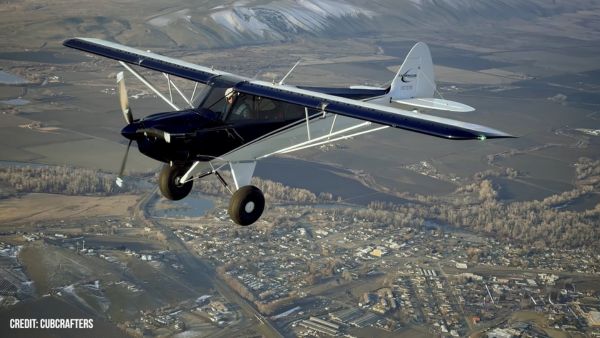Engine Shut Down While Airplane Was Taxiing After Landing, Restart Difficult
The pilots of a Piper PA-32 Saratoga which went down just after takeoff from Lake Tahoe Airport in August had a discussion with airport personnel about the airport's density altitude and the air-fuel mixture after landing at the airport for dinner, according to the NTSB's preliminary report. The aircraft went down shortly after takeoff on the return flight later that same day, and the accident resulted in the fatal injury of all five people on board the airplane.

NTSB Identification: WPR12FA369
14 CFR Part 91: General Aviation
Accident occurred Saturday, August 25, 2012 in South Lake Tahoe, CA
Aircraft: PIPER PA-32-301T, registration: N588ET
Injuries: 5 Fatal.
This is preliminary information, subject to change, and may contain errors. Any errors in this report will be corrected when the final report has been completed. NTSB investigators either traveled in support of this investigation or conducted a significant amount of investigative work without any travel, and used data obtained from various sources to prepare this aircraft accident report.
On August 25, 2012, about 2145 Pacific daylight time, a Piper PA-32-301T Saratoga, N558ET, impacted trees shortly after departing from Lake Tahoe Airport, South Lake Tahoe, California. The right-seated pilot was operating the airplane under the provisions of 14 Code of Federal Regulations Part 91. The five occupants, which included the right and left-seated private pilots, were fatally injured; the airplane sustained substantial damage. The personal cross-country flight was originating from Lake Tahoe Airport, with a planned destination of Fresno, California. Nighttime visual meteorological conditions prevailed, and no flight plan had been filed.
The occupants departed Fresno earlier that day and landed at Lake Tahoe Airport. After touchdown, a pilot was in communication with two fixed base operator (FBO) attendants and received directions of where to taxi the airplane. While taxiing to the ramp, the airplane’s engine shut down and it took numerous attempts for the pilots to restart it. Upon parking, the pilots reported to the attendants that the airplane’s fuel/air mixture was difficult to establish at such a high density altitude and that if you operate the engine too lean its temperature will exceed normal operation parameters.
Following dinner, the occupants returned to the airport with the intention of flying back to Fresno, where the airplane was based. One of pilots made a radio transmission on the Common Traffic Advisory Frequency (UNICOM) stating that they were departing runway 36 and making a “straight out over the lake departure and then a crosswind departure to the left.”
A review of the recorded security camera footage at the airport revealed that the airplane could be seen in the nighttime conditions by a blinking light. The airplane appeared to depart from runway 36 and near the end of the runway began an ascent. The light appeared to level off and then a flash of light occurs in the area of the accident site.
Numerous witnesses reported hearing the airplane depart and noticed that the engine noise sounded labored, as if it was not producing full power. The airplane impacted trees located about 0.43 nautical miles (nm) north of the departure end of runway 36 and came to rest about 300 feet further north.
(Saratoga image from file. Not accident airplane)
 SpaceX to Launch Inversion RAY Reentry Vehicle in Fall
SpaceX to Launch Inversion RAY Reentry Vehicle in Fall Aero-News: Quote of the Day (04.23.24)
Aero-News: Quote of the Day (04.23.24) Aero-News: Quote of the Day (04.20.24)
Aero-News: Quote of the Day (04.20.24) ANN's Daily Aero-Linx (04.20.24)
ANN's Daily Aero-Linx (04.20.24) Aero-News: Quote of the Day (04.21.24)
Aero-News: Quote of the Day (04.21.24)



